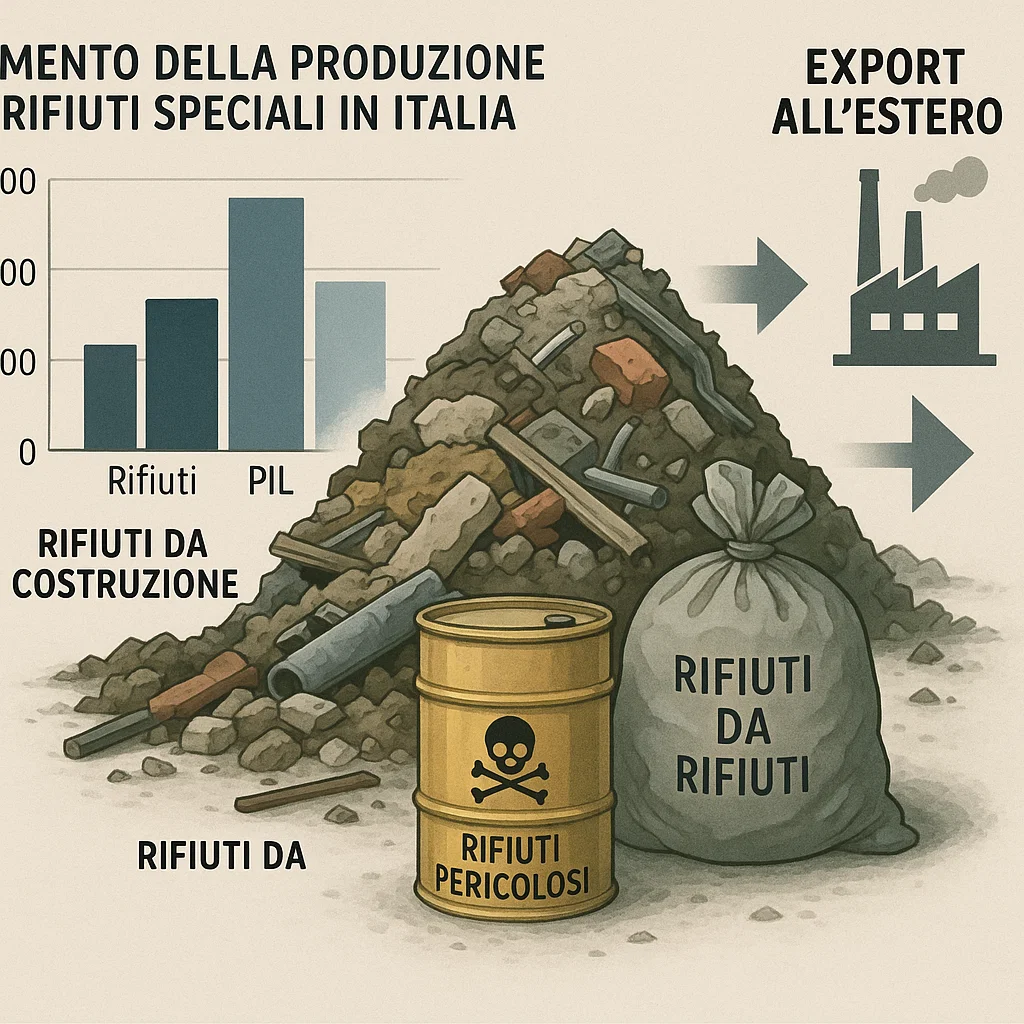
In 2023, the production of special waste in Italy rose by 1.9%, reaching 164.5 million tonnes. This growth, highlighted in the 2025 ISPRA report (based on 2023 data), signals a full return to pre-pandemic trends. Meanwhile, GDP increased by just 0.7% and household consumption by 0.5%, confirming that waste is growing more than three times faster than the economy.
Construction waste and hazardous materials lead the way
The construction and demolition sector remains the top contributor, generating 81.4 million tonnes, or 51% of total waste—though this remains an estimate. Hazardous waste also increased slightly, from 10 to 10.2 million tonnes. While waste from manufacturing declined, “waste from waste” rose to 44.2 million tonnes, reflecting ongoing industrial stagnation.
Waste intensity remains too high
Despite the goals set for 2020, Italy is still far from decoupling waste production from economic growth. In 2023, 80 tonnes of waste were produced per million euros of GDP, slightly more than in 2022 (79.4), though an improvement from 2021 (84.8). Waste intensity from construction activities decreased to 812 tonnes per million euros, a positive trend compared to 845 in 2022 and 982 in 2020.
Waste management sees high recovery, but critical gaps persist
Italy handled 178.9 million tonnes of special waste in 2023, marking a 1.3% increase over the previous year. Of this, 84.5% was sent for recovery, mainly for material recovery (73.1%). Energy recovery remained stable at 1.6%. Landfilling dropped to 7.9 million tonnes, while temporary storage rose slightly to 19.7 million tonnes (11% of total waste).
Export data highlights infrastructural deficits
Waste exports rose from 4.8 to 5.5 million tonnes, including both hazardous and non-hazardous types. Around 1.5 million tonnes were shipped abroad for energy recovery, underscoring Italy’s lack of sufficient incineration capacity. Additionally, 500,000 tonnes of hazardous waste were exported to landfills, reflecting a similar shortfall in domestic disposal infrastructure. Imports, mainly of recyclable metals, fell to 6.8 million tonnes.
A system importing resources, exporting responsibility
The ISPRA data paints a picture of a country that still functions largely as a waste broker rather than a fully equipped waste manager. Recycling rates are improving, landfilling continues to decline, and energy recovery remains unchanged—but exports are rising, revealing an enduring infrastructure gap. Italy continues to import materials for recycling while exporting unrecoverable waste for incineration or landfill abroad.